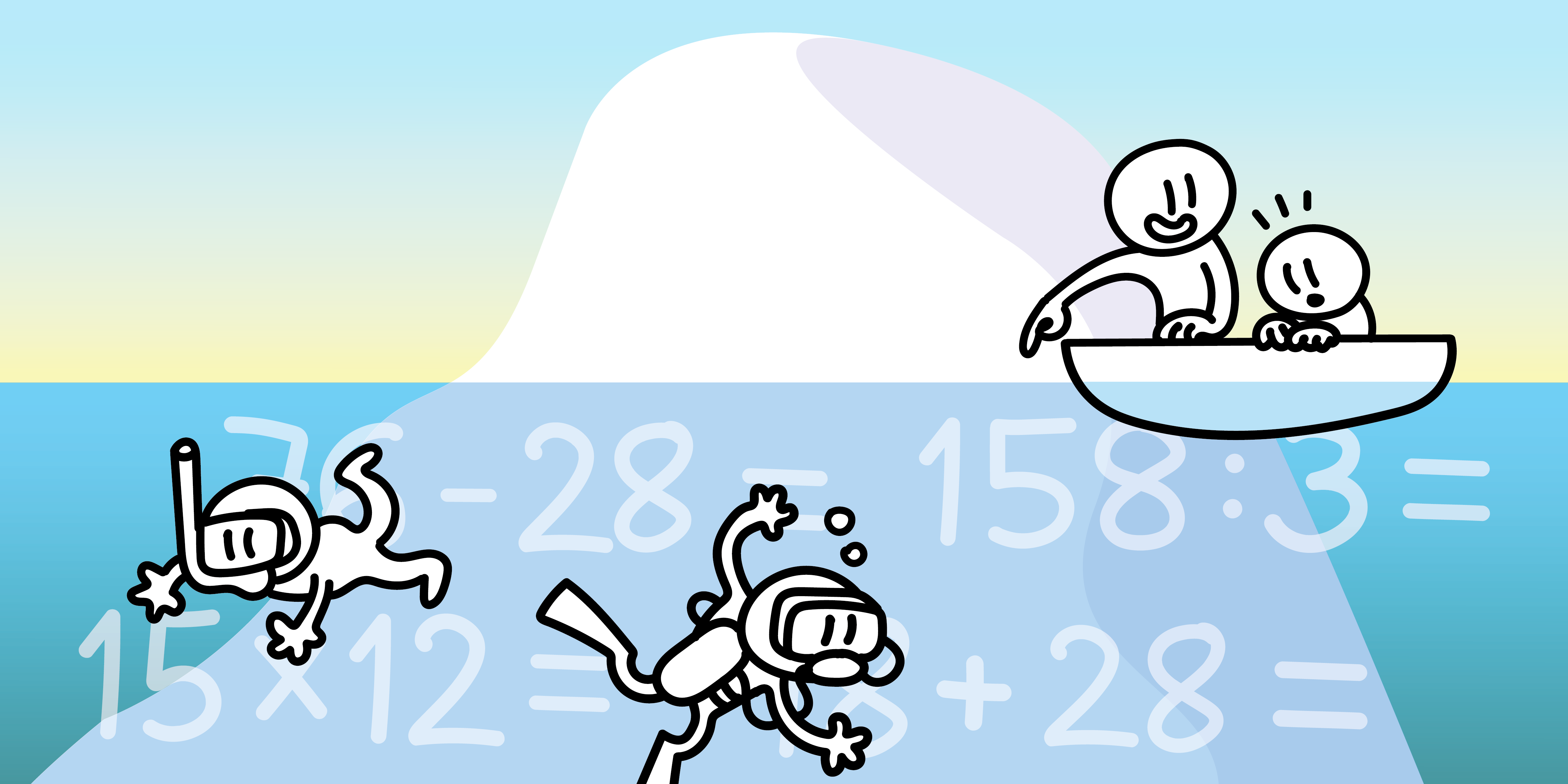22/7 Pi Approximation Day
The 22nd July is Pi Approximation Day! It is also know as Casual Pi Day or Archimedean Pi Day. But, do you know why?
Pi Day is 14th March as, that date in US format is 3/14 (3.14), that is, the three first digits of the famous irrational number. However, it is also celebrated on 22nd July. The date 22/7 is a fraction with an answer that is close to the value of pi. It is actually closer that 3.14!
22/7 = 3.142857142…
|π-22/7| < |π-3.14|
The constant π defines one of the most simple relationships in geometry: the coefficient of the perimeter of a circumference to a diameter. The value of the constant has been obtained through different calculations throughout history, from a geometric point of view. In fact, approximations of pi have been known for almost four thousand years. The question is, what is there behind these approximations? What was discovered before pi in the history of humanity that led to the discovery of pi itself?
Approximations of Pi in Ancient Times
It is worth making certain initial considerations to understand the context of antiquity. Antiquity is the period understood as being between the invention of writing, around the year 3300 B.C., and the fall of the Roman Empire, in the year 476 A.D. It was a period of great cultural and scientific progress, and it led to the birth of the first civilizations. These were the Mesopotamians, the Sumerians, the Assyrians, the Babylonians, the Ancient Egyptians, the Ancient Greeks and Ancient China. During this period, these civilizations developed writing and, by extension, the writing of Numbers. The logic behind their calculations and by extension their mathematics, is very ingenious and is eminently pragmatic. For example, the administration of ancient cities required a register for the management of resources, taxes, etc. To this aim, small clay pieces or counters of different geometric shapes were used to represent a specific quantity of a concrete object. In other words, no difference was made between the number represented and the object that was being counted.
Concretely, the invention of written numbers took place in the Sumerian city of Uruk in the year 3000 B.C, when they moved on from counting with pieces of clay to drawing figures on tablets of fresh clay, so that when it dried the number was registered. And it is just here in the story that Innovamat’s secondary course begins, Sam’s Journey, with which we start the first year course by thinking about our numeral system, comparing it with Sumerian numerals.

The Ancient Babylonians, considered by many as the parents of mathematics together with the Sumerians, were the first in approximating the value of π. They did it in a period understood to be between the years 1900 B.C. and 1680 B.C. Our understanding of the circle is quite different to theirs as we understand it as a geometric place that describes all the points of a plane that are equidistant to a central point. In this way, we understand the concepts of circumference, circle and radius. However, the Babylonians considered the circle to be the resulting shape of turning the radius whilst maintaining one of its extremities fixed in the center of the circumference. Their calculations, made by string and pegs, gave π the value of 3 seeing that the relation between the length and the radius was constant in any circle. As the years passed, they obtained a more precise calculation which opened the door to the decimal world of π = 3 + ⅛ = 3.125, an approximation discovered on an Ancient Babylonian tablet, the famous Susa Tablet.

Approximately in the same years as the Babylonian discovery, their neighbors on the shore of the Nile, in Ancient Egypt, also approximated π. If the reading of the discovery of pi by the Babylonians gives us a decimal approximation, the Egyptian approach gives us a fractional approximation. Which is to say that, just as with the Babylonian explanation, the concept of fractions in Ancient Egypt is not the same as ours, the Egyptians wrote them all as an addition of unit fractions (1/n, where n is a natural number). The approximation of π by the Egyptians was found on the Rhind Papyrus, a papyrus discovered in the ancient Egyptian city of Thebes (now Luxor), acquired by the Scottish lawyer Alexander Henry Rhind in the year 1858. This papyrus, signed by the scribe Ahmes, contained 87 mathematical problems, one of which was the indirect approximation of π. This problem stated that a square with a side of 8 is the same as a circle of diameter 9 (the unit that they used was Khets, about 50 meters). If we convert this relationship into a formula, we arrive at the following approximation:

The person that really made a precise calculation was Archimedes of Syracuse (287 B.C – 212 B.C.), the great mathematician from antiquity, who is also one of the protagonists of our secondary course in Sam’s Journey! Archimedes achieved a great level of precision, by specifying the limits between which he found the solution, in such a way that, together, advanced the calculation, he achieved a higher level of precision. This way of working is known as the Method of Exhaustion. Euclid, the predecessor to Archimedes, had already found, a century earlier, that there was a relationship of proportionality between the area of a circle and the square of its radius, and that this was maintained in circles of different radiuses. From this Euclidian knowledge, Archimedes very ingeniously proposed his approximation of π. He did it by drawing a first regular inscribed polygon and a second regular circumscribed polygon of the same circumference, in such a way that the length of the circumference and the area of the circle were enclosed by their own values of the length and area of the polygons. The approximation is more exact by raising the number of sides of these polygons. In this way, Archimedes managed to calculate these areas with polygons of 96 sides each, approximating that the value of π had to be between 3 + 10/71 (approximately 3.1408) and 3 + 1/7 (approximately 3.1429), which supposes an error between 0.024% and 0.040% with respect to the real value. And watch out! Expressing these values in fractions we get 222/71 < π < 22/7 → which is indeed Our Pi Approximation Day!

These are the most relevant approximations to pi from antiquity, but many mathematicians from all over the world have also approximated it in one way or another in different places and times. Human ingenuity and curiosity through experimentation makes the world progress! Currently, pi still has a place in the planners of investigators and mathematicians but they have swapped the strings, pegs and scrolls of the past for supercomputers capable of calculating millions of decimals of pi. Today, the Team DAViS supercomputer of the University of Applied Sciences of the Grisons holds the record, having been able to calculate to 62 831 853 071 796 decimals of pi in 2021.
How Can we Work on the Discovery of π in the Classroom?
A very beneficial way to discover π in the classroom (or at home) is by handling elements to hand and discovering that the relationship between the perimeter of a circumference and its diameter is π. From there, we can ask the students to look for circumferences in their daily lives, like, for example, a glass, a bottlecap, a watch… We can adapt the activity to make it more beneficial and ask the students to look for bigger circumferences like a wheel or the center circle of a sports field.
Once the circumference of these objects has been identified, we would recommend that the students measure their perimeter and diameter noting down the data obtained. It is important to let the students know the importance of measuring the diameter from side to side of the circumference, passing through the center.
Using a calculator, we would ask them to divide the results achieved, that is, the perimeter by the diameter. We suggest to the students that they think about the results of different circumferences calculated, with the aim of discovering that the division always gives a result of around 3.
From here, we encourage a conversation with the students, explaining to them that π is precisely the constant that relates the diameter and the perimeter of any circumference. We clarify that π is a number close to 3 and it is irrational, that is, it has infinite decimals. We can give an extra layer of depth to the discovery, approaching it from a statistical perspective, comparing the information that we have collected with the real value of π.
And, in this way, through the observation and experimentation with the reality that surrounds us, we can understand the concept of pi. The previous and subsequent reasoning to our approximations of pi brings us considerably closer to that which has been produced throughout history to understand the world that surrounds us.






